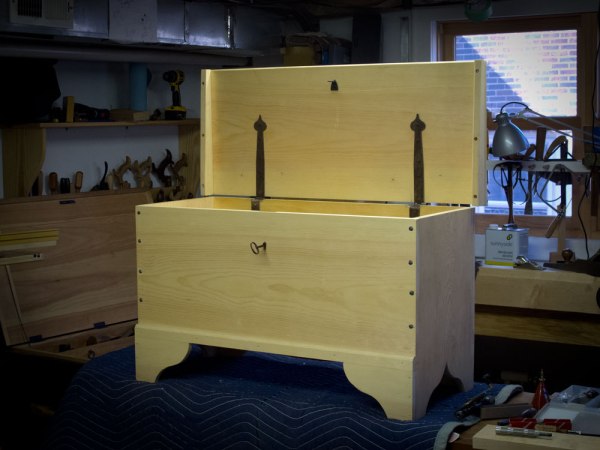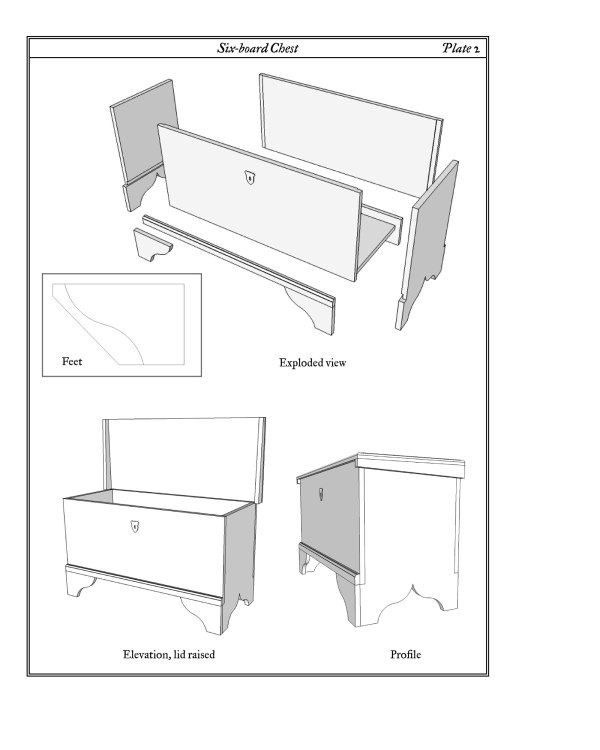Design Under Duress –

Building a project in front of an audience is one thing. Designing it and building it on the fly is enough to drive me to drink.
Earlier this year I did a two-day seminar for the Alabama Woodworkers Guild where I designed and built a six-board chest. While I usually do a lot work beforehand for classes, I was in the final stages of editing “Campaign Furniture” and was a bit task-saturated. Here was my prep work for that class: I threw some boards and tools into my truck and drove south.
Luckily, I’ve built a lot of six-board chests, and the resulting piece turned out well. In fact, I like this particular chest so much that I’m using it in “Furniture of Necessity.” As a result, I had to create a SketchUp drawing and cutting list after building the project.
As I was drawing the chest yesterday, I was amused to see that I had fallen into using some typical ratios while designing the project, even though I didn’t use dividers or a tape measure. I just looked, marked and cut. It really was “By Hand & Eye.”
The elevation of the case is 3:5, one of my favorite ratios. And the ends of the carcase – minus the legs – are 1:1, which is what I almost always use for my tool chests.

While these ratios make the chest’s appearance simple, they complicate the cutting list. If you have ever developed a cutting list from an antique piece of furniture, you probably asked yourself: “Why did they use these odd measurements?” You can chalk up the weird measurements to wood movement or the metric system, or you can realize that perhaps they weren’t measuring as much as we measure.
Here, for example, is the cutting list for the chest as built:
Six-board Chest Cutting List, Furniture of Necessity
No. Name T x W x L
1 Lid 3/4 x 14-3/4 x 35-1/8
2 Battens 3/4 x 1-5/8 x 14-3/4
2 Front/back 3/4 x 14-1/4 x 33-3/8
2 Ends 3/4 x 14-1/4 x 19-1/4
1 Bottom 3/4 x 12-7/8 x 32-3/8
1 Moulding 5/8 x 1-1/4 x 33-3/8
4 Feet 5/8 x 5 x 7-3/8
Yeah, I know. This cutting list could be simplified to use some rounder numbers. Or you could make this mental leap: There is no difference between hitting 35-1/8” or 35” or 35-7/64”. They are all numbers that are available to us.
— Christopher Schwarz



